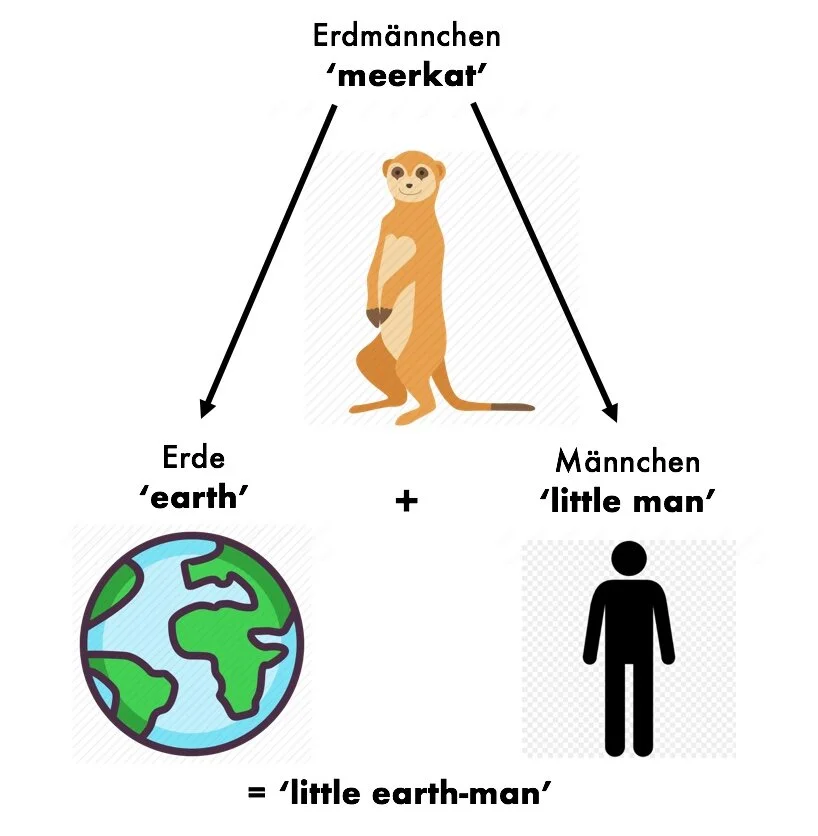Sound Correspondences: Chinese - Japanese - Korean (CJK), Part 2
The Bund or Waitan (Chinese: 外滩; Pinyin: Wàitān, lit. 'Outer Beach') district in central Shanghai.
INTRODUCTION
Sound correspondences, meaning the ways in which words in one language systematically align with those in other languages, have been of immense importance in the history of language study. When scholars seek to establish that a set of languages share a common origin, sound correspondences are what we look for.
In the case of Chinese, Japanese, and Korean, we are dealing with languages that are not part of a single language family. But due to large-scale borrowing of Chinese words into Japanese and Korean over several centuries, we have large sets of words to compare which, in combination, let us draw conclusions about how Chinese words were pronounced over a millennium ago. Words borrowed from Chinese in this way are collectively called “Sino-Xenic,” and more specifically we speak of “Sino-Korean” (SK) and “Sino-Japanese” (SJ).
This post is a short overview of this fascinating and rich topic. It picks up where Levi’s blog post on this topic left off and seeks to provide a picture that is a bit fuller though, for reasons of space, this account is still very far from complete! We hope that readers of all linguistic backgrounds will enjoy it, but it is especially written for those of you who already know one of these languages and are learning one of the others. We hope you’ll benefit from an understanding of some of the ways pronunciations have changed in the last ten to fourteen centuries.
SOME FEATURES OF MIDDLE CHINESE
Though no one now living is a native speaker of any form of Chinese from a millennium ago, and though we have no audio recordings of their speech, we can still know a great deal about earlier stages of Chinese. Aside from the indirect testimony of modern dialects, we have the written evidence of rhyme dictionaries such as the 切韻 Qieyun (AD 601) and the 廣韻 Guangyun (AD 1008), which sorted characters into rhyming sections and then subdivided these by the syllables’ initial consonants. As all languages are constantly changing, the sets of words that rhyme changes too, both from one period to another and from place to place.
As is true of the major dialects today, MC syllables had at most one consonant in initial position. There were no consonant clusters such as we have in English words like “sky,” “three,” and Middle Chinese allowed at most one coda consonant. The set of permitted codas (see the next section for this term) was limited to eight: /p, t, k, m, n, ng/ plus the glides /j, w/, and we will discuss these correspondences in the following section. For convenience we rely on W.H. Baxter’s transliteration of Middle Chinese 反切 fanqie spellings (presented between slashes), as these represent the most important distinctions recoverable from the rhyme dictionary tradition. This system is not a reconstruction per se, but for our purposes it is close enough.
Each MC syllable also had an inherent tone and a vocalic nucleus. Baxter’s spelling represents the main vowels of Middle Chinese with the symbols /a, æ, e, ɛ, i, ɨ, o, u/, of which the first two are low vowels, /i, ɨ, u/ were high, and the rest were mid vowels. Tones are still a feature of modern Chinese dialects such as Mandarin, but they are not part of either Standard Korean or Standard Japanese, so we will not have much to say about them here. Let us just note that there were four MC tone categories:
syllables ending in /p, t, k/ belonged to the Entering Tone 入聲
syllables that had ended in /s/ in Old Chinese (OC) belonged to the MC Departing Tone 去聲
syllables that had ended in a glottal stop /ʔ/ in OC gave the MC Rising Tone 上聲
and the largest class was the unmarked tone category called Level Tone 平聲
As Mandarin developed, Level Tone syllables split into modern tones 1 and 2, depending on the voicing of the initial; Rising Tone gave mostly modern 3 and sometimes 4. Departing Tone syllables universally became Mandarin tone 4, and Entering Tone syllables are now scattered across all four tones in Mandarin.
Our second section below takes up vowel correspondences, and after that we will turn to onset consonants. The places of articulation for MC onset consonants are, from the back of the vocal tract to the front:
glottal (ʔ as in “uh-oh,” Baxter’s /’/)
velar (k)
palatal (č as in “church,” Baxter’s /tsy/)
retroflex (ʈ and ʈʂ somewhat as in English “tree,” but counting as a single consonant, Baxter’s /tr/ and /tsr/)
dental (t)
and bilabial (p).
In all major world languages with millions of speakers, dialect diversity is an important and unavoidable topic; modern Chinese is particularly rich in this regard. But here our focus is on the dialect known as Mandarin.
To give an idea of language-specific peculiarities, let’s consider the term 漢字 meaning ‘Chinese character(s), Kanji.’ The Middle Chinese reading was /xan去 dzi去/ (/x/ denotes the voiceless velar fricative of “loch,” “Bach”).
In Mandarin the reading is Hànzì, where h also denotes that voiceless velar fricative, and the z denotes a sequence [ts] or [dz]--we’re dealing here with spelling changes rather than changes in sound, though in 字 the MC high vowel has become super-high, as we’ll see below. (I use boldface to represent the sounds of the modern languages, in contrast to MC sounds.)
In Korean this term for ‘Chinese character’ is spelled Hanja 한자 (and pronounced hanjja, with a tense jj) where h denotes a glottal fricative as in English, and the high vowel /i/ has shifted to the low vowel a.
In Japanese this term is pronounced Kanji かんじ, where /x/ is replaced by the voiceless stop k, as Japanese lacks velar fricatives, and the onset /dz/ has palatalized to j in this phonetic environment.
CODA CONSONANTS
By “coda” we mean a consonant that follows a vowel within the same syllable. In an English word like “chimney,” the vowel [ɪ] is followed by two consonants, [m] and [n], but only the [m] is in the same syllable. The [n] is taken up as the onset of the second syllable.
Middle Chinese had the eight coda consonants listed above. Of the three modern languages we’re considering, not one preserves all eight unchanged.
TABLE 1: Syllable-final consonants of Middle Chinese with CJK outcomes.
1] Mandarin
As Middle Chinese developed into Mandarin, much change took place in the coda position. Glides /j, w/ are mostly left unaltered, as is the velar nasal /ng/, while MC /m, n/ have merged as Mandarin n.
TABLE 2: Convergent nasal codas in Mandarin.
The final /p, t, k/ of Middle Chinese, meanwhile, ceased to be sounded as Mandarin developed. (A similar change occurred as Latin developed into French: lupus, lupum ‘wolf’ became Fr. loup, pronounced [lu]: /p/ became “zero.”) In some cases the old /k/ has become a glide [-j] (spelled <-i> in Pinyin), for example ‘have to, must’ 得 MC /tok入/ Mand. děi (while in other meanings this character is now read dé).
2] Korean
With the exception of MC final /w/, Korean preserves the old codas very faithfully: /m, n, ng, p, k/ are unchanged, while MC /t/ is consistently represented by Korean ᄅ l~r. While this correspondence may seem unusual, note that all these consonants [t, r, l] are made with the tongue tip touching the teeth. The unaspirated Korean consonant ᄃ d~t tends to weaken to l~r between vowel sounds, as we see for example in the native Korean verb ‘ask,’ 묻다 mut-da, inflected form 물어요 mur-eo-yo; this change was carried out in nearly all syllables borrowed from Chinese. (For a parallel from American English, compare the voiceless [t] sound in “bat” with the voiced consonant [ɾ] in the related word “batter” that results when a vowel follows.) Middle Chinese syllables ending in /aw, æw, ew/ give Ko (y)o, while those in /iw, uw/ give (y)u.
3] Japanese
The preferred syllable shape in Japanese is 1 consonant + 1 vowel, and no more. Because of this, when Japanese speakers borrowed an MC word ending in a stop consonant such as ‘sun, day’ 日 MC /nyit入/, a prop vowel was added to the end to allow the consonant to be sounded. Like many Chinese words, this one was borrowed into Japanese more than once: in the oldest stratum of borrowings, called 呉音 Go-on, the reading was nichi (reflecting *niti), while the more recent 漢音 Kan-on borrowing is jitsu (reflecting *zitu). Here we see the effects of sound changes within Japanese since the time of these borrowings: high vowels [i, u] trigger the development of transitional [s] after [t], and the front vowel [i] causes initial [z] and this [ts] to palatalize, giving j- and ch-, respectively.
So syllables with MC final /t/ in Japanese now end in -chi and -tsu, while those with MC final /k/ correspond to Ja -ki and -ku. In the case of MC final /p/, something interesting has happened. This sound was frequent in earlier stages of Japanese, but over the course of the last millennium it tended to weaken, giving sometimes [h] or its variant [ɸ], sometimes [w], and often being deleted altogether. Compare the conservative reading for the name of Japan, 日本 にっぽん Nippon, with the more modern variant にほん Nihon, both reflecting MC /nyit入-pwon上/.
TABLE 3: Development of MC coda /p/ in Japanese.
The long (y)ū in modern jū is the regular outcome of i and u coming together when the *p dropped out. But in many phrases, the old stop consonant is reflected in a long consonant (also called “geminate,” from the Latin for ‘twin’), for example in ‘10 minutes’ 十分 juppun or jippun, but never *juu-fun. This alternation is even extended to phrases with recent borrowings from English, such as ‘10 points’ jup-pointo.
The only coda permitted in Japanese is the nasal ん, which we represent as -n (though it is only sometimes dental: it assimilates to the place of the consonant immediately following, and if there is none the consonant is the uvular nasal [ɴ]). This coda regularly represents MC finals /m, n/, while MC /ng/ is reflected in Japanese most often by long vowels (written as diphthongs) ei, ō, ū:
TABLE 4:. Outcomes of MC coda /ng/ in Japanese.
MC glide codas correspond to Ja high vowels: MC /-j/ is reflected by i and MC /-w/ by u. Note the change of au to ō within Japanese in the second item below.
TABLE 5: Outcomes of MC glide codas in Japanese.
VOWELS
The vowel is the essential ingredient of any spoken syllable; consonants are optional. As mentioned above Middle Chinese had eight distinct vowel sounds, as represented in Baxter’s transliteration. This chart sorts vowels relevant to the languages we’re discussing according to jaw height (high position in the chart = high jaw position) and tongue position (front/back). The chart is by no means a complete set of all possible vowel sounds: languages tend to have their own characteristic sets.
TABLE 6: International Phonetic Alphabet (IPA) symbols for vowels in CJK.
All three languages we’re considering here have much smaller sets of distinct vowel qualities than Middle Chinese: modern Korean has six simple vowels, which can combine and produce even more vowel qualities; Japanese has five basic short vowels; and the phonetic diversity of Mandarin rhymes can be reduced to just two underlying glides [j, w], two nasals [n, ŋ], and two basic nuclear vowels [a, ə].
TABLE 7: Overview of MC pure vowels with CJK outcomes.
1] Mandarin
As Middle Chinese developed into Mandarin, some re-shuffling of the vowels occurred,as well as lots of mergers. The general trend is one of raising: old mid vowels became high, and old low vowels became mid.
TABLE 8: Examples of vowel raising from MC to Mandarin.
But after palatal and retroflex initial consonants, the high MC vowel /i/ tended to lower. The vowel of the rhyme that Pinyin spells as en is a schwa, close to the sound of <u> in “unmanageable.” The MC palatal and retroflex consonants all became retroflex sounds in Mandarin, and these are hostile to the high front vowel [i]. Vowel lowering also occurred in the MC diphthong /uw/.
TABLE 9: Examples of vowel lowering from MC to Mandarin.
Another important development in Mandarin is the “super-high” variants of the /i/ phoneme, where the jaw is as high as can be and the tongue is very near contact with the roof of the mouth. This vowel became syllabic [z̩] after dentals and syllabic [ʐ̩] after retroflex initials. International Phonetic Alphabet symbols are included, as the Pinyin spelling does not represent the different sounds in these cases.
TABLE 10: Mandarin super-high vowels from MC /i, ij/.
By “mergers” we mean instances where sounds that used to be distinct have become homophones. Examples in Mandarin are numerous: the words below now all have the rhyme -e (IPA [ɤ]), but in Middle Chinese none of these four rhymed with any of the others, and in Korean and Japanese their rhymes are still distinct.
TABLE 11: MC rhymes that developed into Mandarin -e.
2] Korean
In Korean the vowels of Middle Chinese have been very faithfully preserved. With its six basic vowels and their ability to fuse with one another, yielding even more distinct qualities, Korean has a very rich palette of sounds available, and the vowel system seems to have changed little over the last five or six centuries. MC mid vowels /e, ɛ, o/ are generally reflected by 어 eo; MC low vowels correspond to Korean low vowels, and likewise MC high vowels to Korean high vowels, with an important class of exceptions like the words in the table below.
TABLE 12: MC high vowels with exceptional low-vowel outcomes in Korean.
As we can see, the MC high-mid and high-vowel rhymes /i, ij, e/ are sometimes reflected by Korean low a when MC had an initial dental or palatal consonant. This is not always the case: compare
‘time, hour’ 時 MC /dzyi平/, Ko si 시
‘two’ 二 MC /nyij去/, Ko i 이
where the MC high vowel is matched by a Korean high vowel. What causes this discrepancy is not evident.
3] Japanese
In Japanese too there have been few changes overall in the vowel system, but there are fewer distinct basic vowel qualities than in Korean, and many old distinctions have been leveled out: the sequences /au/ and /ou/ of older stages of Japanese are now both ō in the modern language, while older /eu/, /yau/ and /you/ have all become yō. These changes applied to Chinese and native Japanese words alike. The effects of the loss of old /p/ and the representation of MC /ng/ by Japanese i and u, mentioned above, have made ō perhaps the most frequent vowel sound in Sino-Japanese words. The words collected in the table below rhyme in modern Japanese, but would have been distinct in earlier stages, as were the source words in Middle Chinese. I’ve added historical Sino-Japanese spellings in brackets (many authorities instead write f where I’ve put a p between vowels, but as I outline in the blog post just linked to, I believe that several centuries ago Japanese had a voiceless bilabial stop consonant in these positions, corresponding to MC final /-p/).
TABLE 13: MC rhymes with outcomes -ō, -yō in Japanese.
INITIAL CONSONANTS
Consonants in this position of a syllable, where a glide or vowel sound follows, are also called “onsets.”
The table includes a representative selection of consonants of Middle Chinese with their correspondences in the modern languages. For the stop consonants /k, tr, t, p/ and affricates /tsy, tsr, ts/ (but not /’/ = [ʔ]) Middle Chinese had matching aspirate and voiced counterparts, while for the voiceless fricatives /x, sy, sr, s/, Middle Chinese also had matching voiced counterparts /h, zy, zr, z/. Note that /h/ denotes a voiced MC sound.
Mandarin sounds w, y are included here as initial consonants, but they are more correctly classed with the medial glides.
1] Mandarin
In the development of Mandarin the three-way MC distinction /k, kh, g/ gave way to a simple two-way distinction of unaspirated/aspirated: the voiced member became aspirated in the Level Tone, and unaspirated voiceless in other tone categories. Voiced fricatives became voiceless, while the MC palatal nasal /ny/ [ɲ] generally became r [ʐ], the only voiced fricative sound of Mandarin.
Two important changes along the way to Mandarin took place when the glide [j] (or a front vowel) was in contact with the initial consonant: MC labial stops /p, ph, b/ tended to become labiodentals, ultimately giving Mandarin f; while MC velar /k, kh, g, x, h/ and dental /ts, tsh, dz, s, z/ developed into the palatal series j, q, x of Mandarin. Examples of these changes are in green in the table, alongside cases of similar-sounding words where these changes did not take place, in blue.
TABLE 15: Mandarin syllables with (green) and without palatalization effects on initials (blue).
2] Korean
Like Mandarin, Korean collapses the three-way MC /k, kh, g/ stop distinction into just aspirated (k) and unaspirated (g/k). Korean has a third manner of articulation for stops, namely the tense kk, jj, tt, pp, but these historically result from Korean clusters, and do not generally occur Chinese-derived words. The only tense sound used for Sino-Korean is the ss in 氏 ssi (in Chinese ‘surname,’ in Korean honorific with names) 雙 ssang ‘twin.’
Korean dislikes having the sounds r and ny in word-initial position, though it tolerates them in the middle just fine. For that reason many Sino-Korean syllables with these onsets have acquired alternate pronunciations based on the position of the relevant syllable within a word:
‘woman, female’ 女 MC /nrjo上/ simplifies to yeo initially, as in yeo-ja ‘woman,’ but keeps its original n non-initially in the word geu-nyeo ‘she’
‘coming’ 來 MC /loj平/ gives rae (with r for /l/) in the middle of a word, such as 未來 mi-rae ‘future,’ versus 來日 nae-il ‘tomorrow’ with an n substituted when the r was word-initial
3] Japanese
We saw above that Japanese represents the range of MC vowels with a modest-sized palette of just five basic vowel qualities. With consonants too, the set of sounds available in Japanese was quite small, so some Japanese consonants had to cover a range of MC sounds, and as a result have become very high-frequency in Sino-Japanese vocabulary. To give an impression of this kind of many-to-one correspondence, the table below shows various MC correspondences with Japanese s (which has a variant sh when i or y follows), and g. Recall that MC dental /s/ is a consonant distinct from palatal /sy/, as /ts/ is distinct from /tsy/, and so on, while MC /zj/ is a sequence of fricative plus glide.
TABLE 16: Some MC sources of Japanese consonants s (sh), g.
CONCLUSION
To summarize some of the sound developments we’ve discussed in this post, each of the last few tables presents a set of words that have become homophones in one of the three modern languages. I hope these data make clear the extent to which each language has adapted the source words and then undergone its own sound changes, and that this entices you to dig even further into the fascinating topic of CJK sound correspondences!
TABLE 17: MC syllables with Mandarin outcome ji, with SK and SJ correspondences.
TABLE 18: MC syllables with Korean outcome yeon, with Mandarin and SJ correspondences.
TABLE 19: MC syllables with Japanese outcome shō, with Mandarin and SK correspondences.
If you’re interested in learning either Chinese, Korean, or Japanese, or any combination of these, LanGo is here for it and here for you!



















































Tools for helping you master some of the trickier points of German grammar, whether you’re learning it for the first time or wanting to review the fundamentals. Los geht’s!